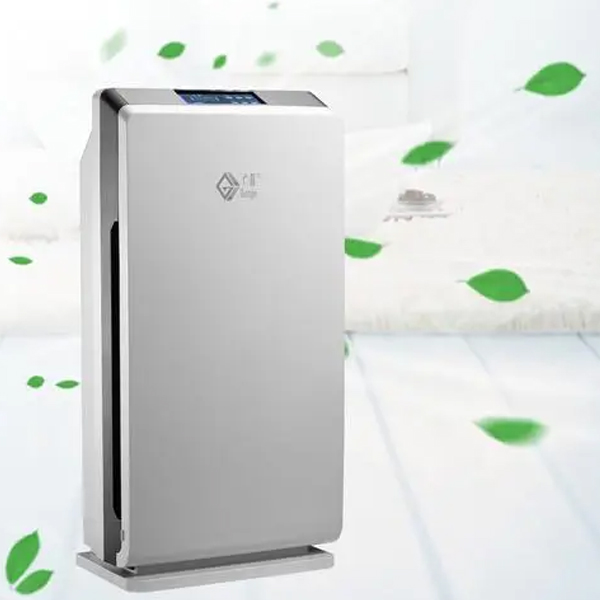In recent years, with the popularity of home decoration, indoor formaldehyde pollution has attracted widespread attention. Formaldehyde is a colorless and pungent gas that is harmful to health. To address this issue, it is important to understand how formaldehyde is produced. It is primarily generated through the following ways:
- Indoor building materials: Materials such as plywood, particleboard, medium-density fiberboard, decorative coatings, adhesives, flooring, wallpapers, etc., often contain high levels of formaldehyde and release it into the air after installation.
- Furniture and household items: Items like sofas, mattresses, carpets, curtains, textiles, etc., may contain formaldehyde. These products commonly use adhesives, dyes, and preservatives, which can release formaldehyde over time.
- Tobacco smoke: Formaldehyde is present in tobacco smoke, so smoking or exposure to secondhand smoke can lead to formaldehyde exposure.
- Combustion of coal and gas: Formaldehyde is produced when coal and gas are burned. Therefore, appliances like coal-fired stoves and gas cookers may release formaldehyde.
As a result, formaldehyde is commonly found in various environments, especially in newly-built houses and enclosed spaces.
Long-term exposure or high concentrations of formaldehyde can pose serious health risks, including:
- Respiratory problems: High concentrations of formaldehyde can irritate the respiratory system, leading to coughing, wheezing, difficulty breathing, and other respiratory issues.
- Eye irritation: Formaldehyde exposure can cause eye redness, itching, excessive tearing, and other symptoms. Prolonged exposure may result in conjunctivitis, keratitis, and other eye conditions.
- Skin problems: Contact with formaldehyde can cause skin irritation and allergic reactions, resulting in symptoms such as redness, itching, rashes, etc. In severe cases, it may lead to skin ulcers and allergic dermatitis.
- Central nervous system issues: Symptoms such as headaches, dizziness, insomnia, and memory decline can be caused by formaldehyde exposure.
- Immune system problems: Formaldehyde has a certain inhibitory effect on the immune system. Long-term exposure can lead to a weakened immune function, increasing the risk of infections and diseases.
- Increased cancer risk: Formaldehyde has been classified as a carcinogen by the International Agency for Research on Cancer (IARC). Prolonged exposure to high concentrations of formaldehyde increases the risk of cancers such as nasopharyngeal cancer, sinus cancer, and laryngeal cancer.
Therefore, to protect our health, it is important to avoid prolonged exposure to high concentrations of formaldehyde, especially during home renovations and when moving into a new house. Proper measures should be taken to control and prevent formaldehyde in these circumstances.
How to Solve the Problem of Formaldehyde? There are several methods that can be adopted:
- Plant purification: Some plants, such as spider plants, aloe vera, ivy, etc., have the ability to absorb formaldehyde. Placing these plants indoors can help purify the air.
- Indoor air purifiers: Air purifiers can filter and adsorb harmful substances like formaldehyde in the air, improving indoor air quality.
- Choose low formaldehyde materials: When decorating and selecting furniture, try to choose materials and products with low formaldehyde emissions, such as environmentally friendly panels and green coatings.
- Prevention measures: During the decoration process, pay attention to standardized construction techniques, avoid using adhesives and coatings that contain formaldehyde, and clean up construction waste in a timely manner to reduce the source of formaldehyde.
- Regular testing: Regularly use formaldehyde detection instruments to measure the concentration of formaldehyde in indoor air. Take corresponding measures promptly to maintain healthy indoor air quality.
- Ventilation: Maintain air circulation indoors by opening windows or using ventilation equipment to expel indoor pollutants. This is especially important in newly renovated rooms to allow formaldehyde to be released outdoors.
While opening windows is a simple and effective ventilation method, sometimes it may not be sufficient or convenient. The use of ventilation equipment can provide better ventilation, especially in special circumstances or when more precise control is needed to address formaldehyde and other pollutants. For example:
- Airflow control: Ventilation equipment can help control indoor airflow, ensuring uniform air circulation and avoiding dead corners and stagnant areas. This is crucial for the effective removal of harmful substances like formaldehyde.
- Continuous ventilation: Ventilation equipment can provide continuous ventilation without relying on open windows. Especially in cold or humid weather conditions, opening windows may lead to a decrease in indoor temperature or an increase in humidity. Using ventilation equipment can solve this problem.
- Filtration and purification: Some ventilation equipment is equipped with filters or purifiers that can filter and purify pollutants, including formaldehyde, in the air. This improves air quality and reduces the impact of harmful substances on human health.
- Automated control: Ventilation equipment can be regulated and managed through automated control systems. It can automatically start and stop based on indoor air quality and pre-set timing, providing a more convenient and intelligent ventilation solution.
It is important to note that formaldehyde remediation is a comprehensive process that requires control from the source, indoor ventilation, indoor purification, and other aspects. It is necessary to apply multiple methods in combination to achieve better results. Additionally, attention should be paid to the formaldehyde release cycle, as formaldehyde emission requires a certain amount of time. Continuous monitoring and remediation are necessary.
